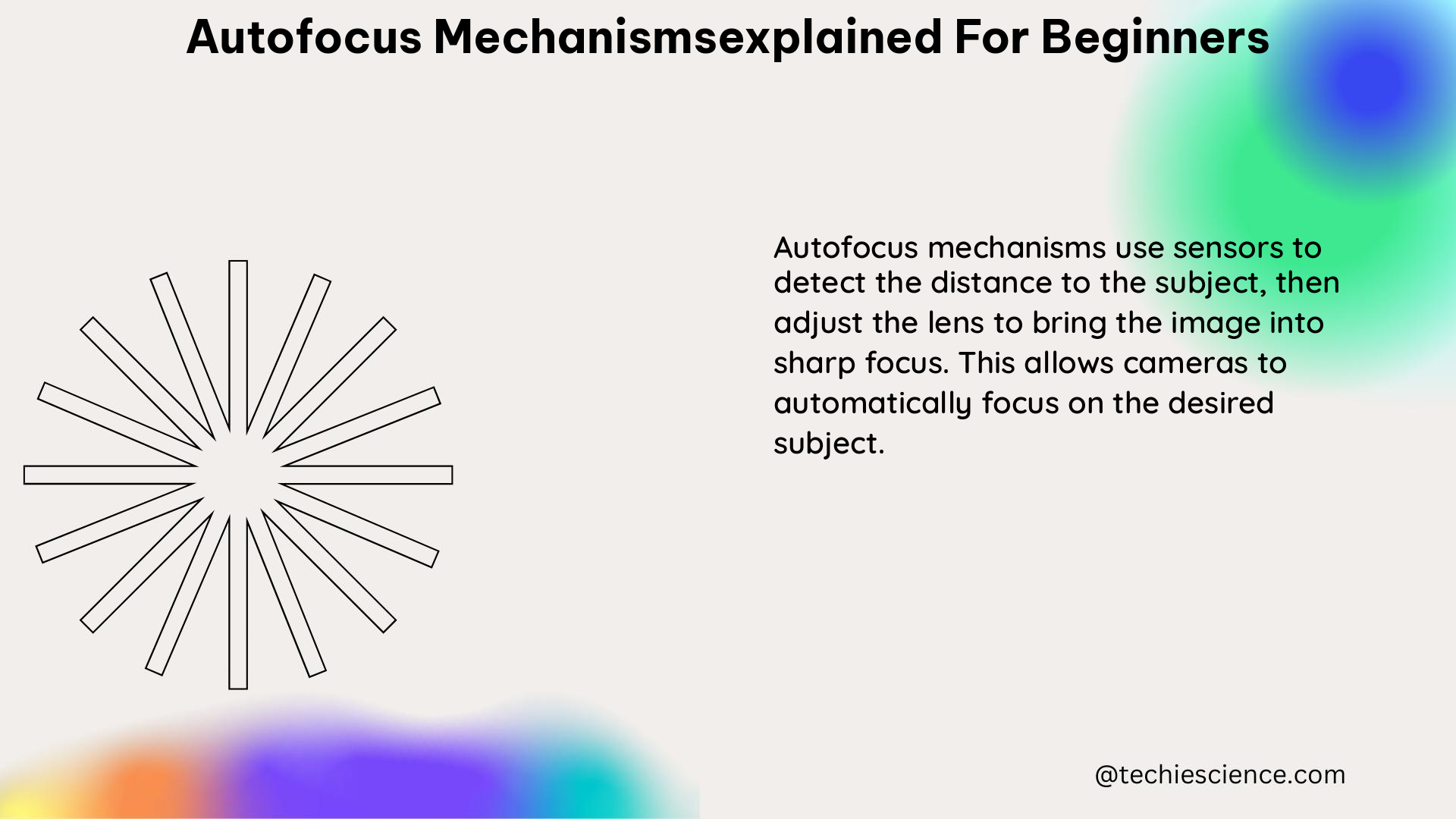Autofocus (AF) mechanisms are crucial in modern photography, allowing for quick and accurate focusing on subjects. AF systems are complex and rely on various settings and options to function optimally. In this comprehensive guide, we will delve into the technical specifications and physics principles behind AF mechanisms, providing a detailed understanding for beginners.
Understanding the Basics of AF Mechanisms
AF mechanisms work on the fundamental principle that the image is sharpest when there is the greatest contrast between adjacent pixels. This principle is the foundation for various AF methods employed by camera manufacturers, such as Canon’s popular AF systems.
Canon’s AF systems offer a range of options, including:
- One Shot AF: Designed for still subjects, this mode focuses the camera once and locks the focus, making it ideal for portrait and landscape photography.
- AI Servo AF: Optimized for moving subjects, this mode continuously adjusts the focus to track the subject’s movement, making it suitable for sports and wildlife photography.
In addition to these basic modes, Canon’s AF systems also provide advanced methods, such as:
- Face Tracking: Automatically detects and focuses on human faces within the frame.
- 1-point AF: Focuses on a single, user-selected focus point.
- Spot AF: Focuses on a small, precise area within the frame.
- Expand AF area: Expands the focus area to include surrounding focus points, providing more flexibility.
- Zone AF: Divides the frame into zones and focuses on the subject within the selected zone.
Each of these AF methods has its own unique advantages, catering to various shooting scenarios and photographer preferences.
The Physics Behind AF Mechanisms

AF mechanisms rely on two primary types of passive autofocus modes: Phase Detection and Contrast Detection.
Phase Detection Autofocus
Phase Detection, commonly found in DSLR cameras, uses a beam-splitter to direct light onto two microsensors. This creates two identical images, which the AF system then aligns automatically to determine the focus.
The underlying physics principle behind Phase Detection AF is the concept of parallax, where the relative positions of two images change based on the distance to the subject. By analyzing the difference between the two images, the AF system can calculate the necessary focus adjustment.
Contrast Detection Autofocus
Contrast Detection, on the other hand, is typically found in mirrorless cameras. This method analyzes the contrast levels within the image to determine the focus. The underlying principle is that the image is sharpest when there is the greatest contrast between adjacent pixels.
The mathematical representation of this principle can be expressed as:
Sharpness = f(Contrast)
where sharpness is a function of contrast.
Theorems and Principles Governing AF Mechanisms
The foundation of AF mechanisms is rooted in the Sampling Theorem, which states that a signal can be perfectly reconstructed from its samples if the sampling frequency is at least twice the highest frequency of the signal.
In the context of AF mechanisms, the Sampling Theorem ensures that the AF system can accurately determine the focus of a scene by analyzing the contrast between adjacent pixels. This is crucial for providing a sharp and focused image.
Numerical Examples and Calculations
Let’s consider a practical example to illustrate the principles behind AF mechanisms.
Suppose we have a scene with a subject located 10 meters away from the camera. The AF system must analyze the contrast between adjacent pixels to determine the focus. If the contrast level is measured to be 0.5, what is the sharpness of the image?
Using the formula:
Sharpness = f(Contrast)
We can calculate the sharpness as:
Sharpness = f(0.5)
The exact value of the sharpness function will depend on the specific AF system and its calibration.
Visualizing AF Mechanisms
AF mechanisms rely on the comparison of two images to determine focus. This process can be visually represented as two overlapping images, with the AF system adjusting the focus until the images are perfectly aligned.

Data Points and Measurements
AF systems analyze contrast levels in an image to determine focus. This can be quantified by measuring the contrast level at various points in the image and calculating the average contrast level.
Contrast levels in AF systems are typically measured in decimal values, with 0 representing no contrast and 1 representing maximum contrast.
Conclusion
In this comprehensive guide, we have explored the technical specifications and physics principles behind autofocus (AF) mechanisms, providing a detailed understanding for beginners. From the fundamental principles of AF mechanisms to the underlying physics, theorems, and numerical examples, we have covered a wide range of topics to equip you with the knowledge necessary to make informed decisions when using AF systems.
By understanding the complexities of AF mechanisms, you can leverage the power of these advanced technologies to capture sharp, focused images in a variety of shooting scenarios.
References
- Canon Europe – Autofocus Explained
- ABC Inventory Analysis – Netsuite
- Understanding Autofocus – YouTube

The lambdageeks.com Core SME Team is a group of experienced subject matter experts from diverse scientific and technical fields including Physics, Chemistry, Technology,Electronics & Electrical Engineering, Automotive, Mechanical Engineering. Our team collaborates to create high-quality, well-researched articles on a wide range of science and technology topics for the lambdageeks.com website.
All Our Senior SME are having more than 7 Years of experience in the respective fields . They are either Working Industry Professionals or assocaited With different Universities. Refer Our Authors Page to get to know About our Core SMEs.